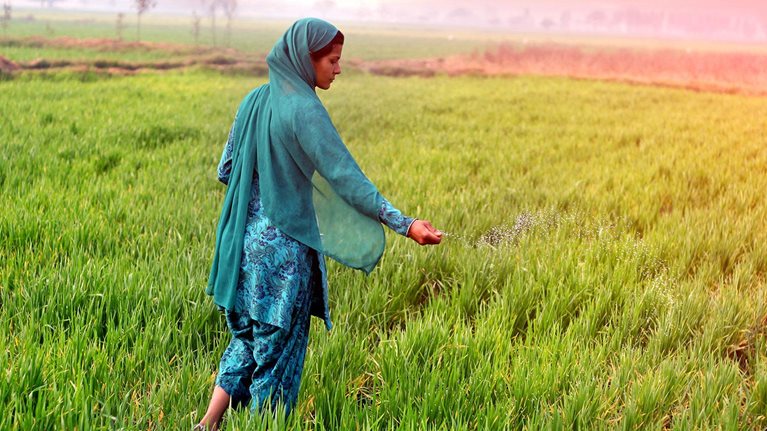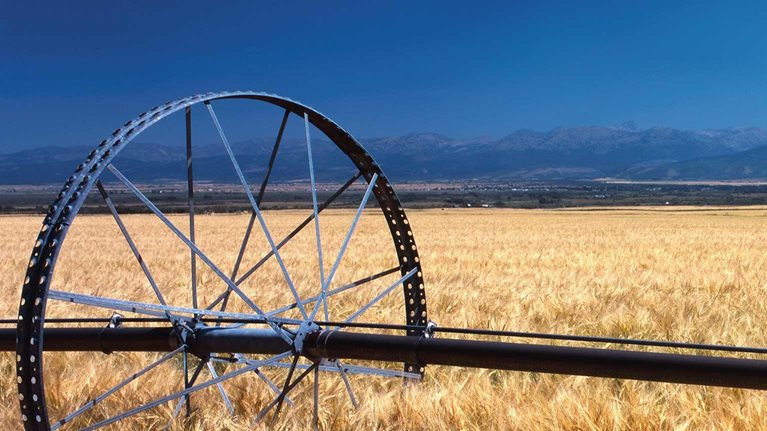In 2020, we released our report Agriculture and climate change, which identified key actions the agricultural industry could take to support decarbonization.1 For this report, our research has focused on how decarbonization measures have evolved, as well as on the key barriers to their adoption and the actions industry players and investors can take to support their uptake. At the same time, conversations about sustainable transitions have increasingly focused on agriculture’s effects on nature and society beyond climate change. For example, agricultural land covers half of all habitable land and is responsible for 70 percent of freshwater withdrawals.2 In addition, food systems are the primary driver of biodiversity loss around the world, and these systems have growing effects on biosphere integrity, human health, and food access.3 While climate change remains the focus of this report, decarbonization and the actions to achieve it cannot be considered separately from their broader impacts on nature and society. Trade-offs and other benefits associated with decarbonization actions are highlighted throughout the report.
Achieving a 1.5° pathway will require actions that extend beyond the farm throughout the value chain. Chief among these actions are reducing food loss and waste, adopting dietary shifts, and adapting how we use arable land, all of which are critical to decarbonization and will help the industry meet global food needs while maintaining the livelihoods of farmers (Exhibit 1).

- Tackling food waste. Approximately 30 percent of the world’s food is lost or wasted every year.4 Food loss and waste not only contribute an estimated 8 to 10 percent of global anthropogenic emissions5 but also drive food insecurity and overproduction, the latter of which contributes in turn to nature degradation. It is estimated that food waste could be reduced by approximately 23 percent by 2050, which would account for approximately 0.7 metric gigatons (Gt) of CO2 equivalent (CO2e).6 To achieve these reductions, we will need to better connect supply chains, improve preservation, adapt purchasing habits, and make more productive use of food loss or waste, creating opportunities for industrials across the value chain.
- Shifting what we eat. Dietary shifts are already opening new markets and creating value for farmers and industrials. Producers and consumers can avoid releasing a substantial amount of emissions by turning to alternative protein sources, including plant-based products and precision-fermented and cellular products that are nearly identical to animal protein products. For example, classic plant-based options emit 12 percent of the total greenhouse gases (GHG) emitted by cattle and have a lesser ratio of methane per kilogram of product.7 Dietary shifts away from animal proteins could save nearly 640 million hectares of land, which could in turn be reforested or be a locus for other nature-based solutions.8 Of course, in the case of alternative protein sources, trade-offs, including human health, food access, and farmer equity, are especially important and must be adequately considered as part of any transition.
- Addressing land use with nature-based solutions. Agricultural land covers approximately 4.9 billion hectares, or 38 percent of the world’s terrestrial area, and is estimated to account for approximately 80 percent of global land-use change as land is cleared or converted for cropland, feed production, or grazing land.9 Given this enormous land-use footprint, nature-based solutions, including conservation and restoration solutions, have the potential to abate 6.7 GtCO2e in 2050—approximately 80 percent of the total abatement potential.10 The largest levers for achieving this potential concern improved forestry practices, especially forest restoration. Notably, adoption of many nature-based solutions will likely require increased land-use intensification to meet global food demand and adequate incentives for farmers to limit future land conversion.
Changing how we farm, the focus of this report, is critical to a successful transition. Building on our previous work, we have defined 28 measures that can support decarbonization on the farm while creating potential value for the industry and farmers (Exhibit 2). Together, these measures have an annual emissions-reduction of approximately 2.2 GtCO2. Many of these measures can be implemented at little to no cost to the farmer and have benefits beyond emissions reductions, including yield and biodiversity uplift.

Although a 1.5˚ pathway exists and can create value for farmers and the broader industry, meaningful barriers are preventing adoption of decarbonization solutions at scale. Farmers are central to the sustainability transition, but they do not yet have sufficient incentives to adopt new methods and technologies. Emissions tracing and other actions require new, innovative solutions to facilitate decarbonization. And there is much room to grow in helping farmers overcome challenges in scaling their operations and maintaining profitability.
The findings in this report can guide food and agriculture organizations as they transition to increased sustainability. Each intervention should be tailored to its specific context, but broadly speaking, change requires the following:
- financial incentives to spur farmer action, whether through carbon markets, green premiums, subsidies, rebates, or other green-financing mechanisms
- ecosystem collaboration and improved tracking and traceability to bring solutions to market and support monetization of on-farm practice changes and purchaser decision making
- research and investment to bend the cost curve to reduce adoption costs of existing solutions and support the development and scale-up of new technologies
The food and agriculture value chain has a chance to create a more sustainable ecosystem that feeds a growing planet while maintaining the livelihoods of farmers. With tailored and concentrated action, industry players, policy makers, and investors can accelerate the path to this future while enabling their own growth.
Although the path to achieving 1.5˚C will not be straightforward, it can create real business value for farmers and players throughout the value chain, with additional environmental benefits beyond reducing climate change. Action will be required beyond the farm, but there is a real opportunity to drive on-farm decarbonization while capturing business value. A more sustainable future for agriculture that feeds a growing planet while maintaining the livelihoods of farmers is feasible. And industry players, policy makers, and investors can accelerate the path to the future while enabling their own growth.


